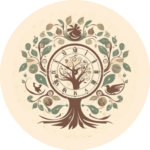Everybody was talking about hysteria in late 19th-century Paris. Hysterics appeared in novels and plays; they were painted, photographed, sculpted and drawn. People crowded the Salpêtrière Hospital in Paris to attend demonstrations and lectures on hysterics given by the world-renowned neurologist Jean-Martin Charcot (1825-1893), and to gaze at his star patients. Who could resist admiring the ‘queen of hysterics’, the beautiful Blanche Wittmann (1859-1913), her face relaxed and insensible as she was pierced with needles by doctors, to demonstrate how she couldn’t feel any pain?
The Surprising Connection Between Freud and Greek Mythology
If there’s one person who thought and wrote about penises a lot, it was Sigmund Freud (1856-1939), the ‘father of psychoanalysis’. Like many nineteenth-century intellectuals, Freud was interested in sex and sexuality, and how lived experiences shape our minds. For men like him (for it was mostly men who were writing about this subject), Greco-Roman antiquity was key to understanding …



